Cover photo by Andrew & Heather Hodgson.
Find the Tropical Bluetail in the FBIS database (Freshwater Biodiversity Information System) here.
Family Coenagrionidae
Identification

Amatikulu Nature Reserve, KwaZulu-Natal
Photo by Ryan Tippett
Very small size
Length up to 31mm; Wingspan reaches 40mm.
The Tropical Bluetail is a small, variable damselfly. It is most easily mistaken for a Sprite (Pseudagrion) or Bluet (Africallagma; Azuragrion). In males, the most diagnostic features are the bicoloured pterostigmas, distinctively shaped blue marking on segments 8 and 9, and the dark metallic blue patch on segment 2. Note that the sides of the thorax may be green or sometimes blue.
Females are very variable and can be dull greenish, brown, or orange. The side of the thorax is brown or greenish-brown in aged females. Mature females have green thorax sides while immature females exhibit bright orange sides. Orange females could be mistaken for a female Palmiet Sprite (Pseudagrion furcigerum), but are smaller and have thicker black markings on the thorax
Click here for more details on identification.

Near Hluhluwe, KwaZulu-Natal
Photo by Ryan Tippett
Habitat
The Tropical Bluetail is able to utilise virtually any still-water habitat, from lakes and pans to dams, ponds, and marshes. It also inhabits slow-flowing sections of rivers and streams. The Tropical Bluetail occupies both perennial and temporary waterbodies. In addition, Ischnura senegalensis is tolerant of high salinities and polluted waters. It normally sits amongst aquatic vegetation like sedges, Reeds, grasses, and waterlilies, and is frequently found on mats of floating algae.

Photo by Ryan Tippett
Behaviour
Mature males sit close to the water on vegetation. Females are found in the same areas as the males. Female and immature Tropical Bluetails are often found in long grass and rank growth further from the water.
Most active from September to April, but recorded throughout the year. See Phenology below.
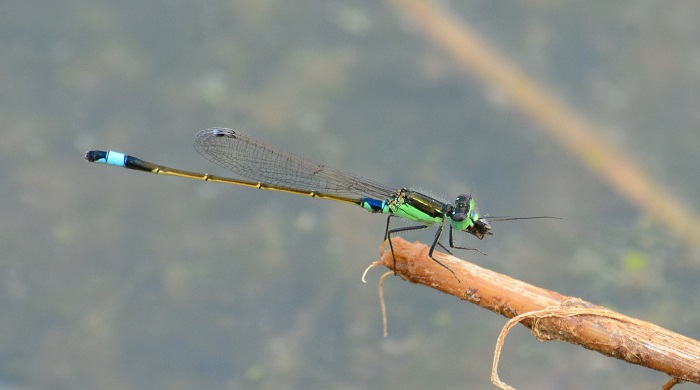
Hluhluwe district, KwaZulu-Natal
Photo by Ryan Tippett
Status and Conservation
The Tropical Bluetail is very common and widespread. It is listed as of Least Concern in the IUCN Red List of Threatened Species. Ischnura senegalensis is a very hardy and adaptable species. It is often the most common species in degraded or marginal habitats.
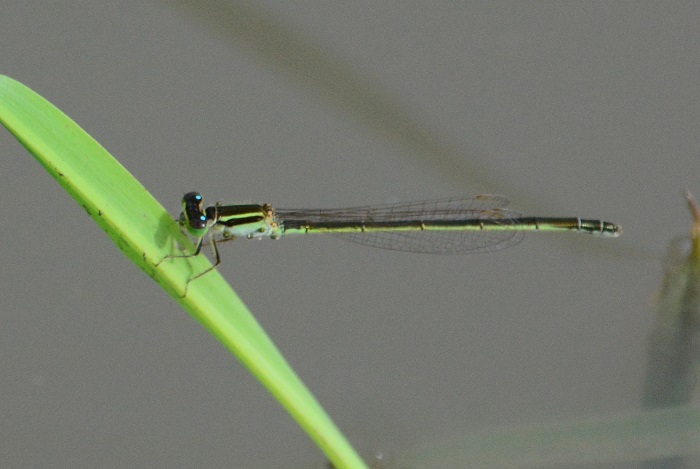
Linyanti, Botswana
Photo by Ryan Tippett
Distribution
The Tropical Bluetail has a very wide distribution. It is found throughout most of Africa, Madagascar, the Middle East, Central, Southern, and South East Asia, Indonesia, and on to Papua New Guinea. It is also found in parts of China and Japan.
In South Africa it occurs throughout, including arid areas provided there is suitable habitat.

Amakhosi Game Reserve, KwaZulu-Natal
Photo by Ryan Tippett
Below is a map showing the distribution of records for Tropical Bluetail in the OdonataMAP database as of February 2020.

Below is a map showing the distribution of records for Tropical Bluetail in the OdonataMAP database as of December 2024.
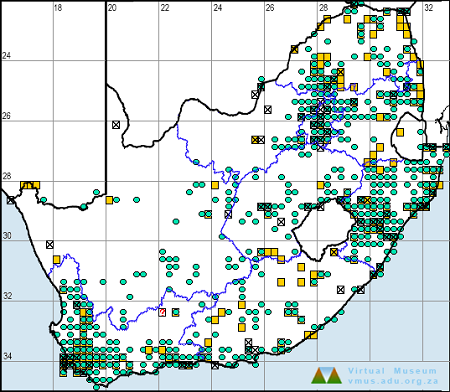
The next map below is an imputed map, produced by an interpolation algorithm, which attempts to generate a full distribution map from the partial information in the map above. This map will be improved by the submission of records to the OdonataMAP section of the Virtual Museum.


Ultimately, we will produce a series of maps for all the odonata species in the region. The current algorithm is a new algorithm. The objective is mainly to produce “smoothed” maps that could go into a field guide for odonata. This basic version of the algorithm (as mapped above) does not make use of “explanatory variables” (e.g. altitude, terrain roughness, presence of freshwater — we will be producing maps that take these variables into account soon). Currently, it only makes use of the OdonataMAP records for the species being mapped, as well as all the other records of all other species. The basic maps are “optimistic” and will generally show ranges to be larger than what they probably are.
These maps use the data in the OdonataMAP section of the Virtual Museum, and also the database assembled by the previous JRS funded project, which was led by Professor Michael Samways and Dr KD Dijkstra.
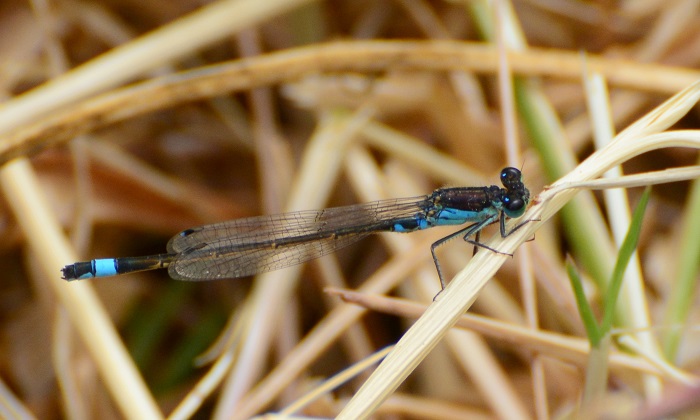
Carnarvon district, Northern Cape
Photo by Ryan Tippett
Phenology

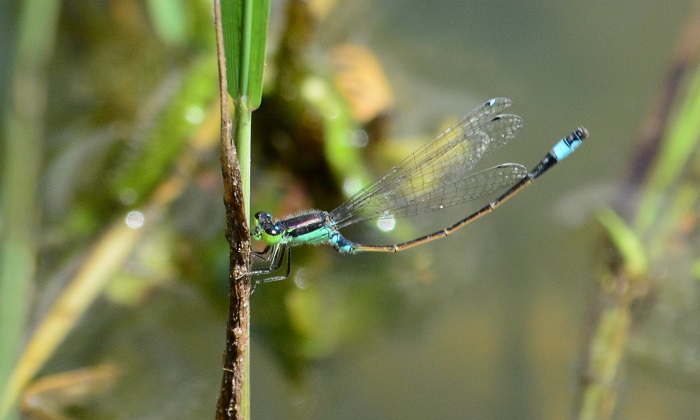
Hluhluwe district, KwaZulu-Natal
Photo by Ryan Tippett
Further Resources
The use of photographs by Andrew & Heather Hodgson is acknowledged. All other photographs by Ryan Tippett.
Tropical Bluetail Ischnura senegalensis (Rambur, 1842)
Other common names: Hemelstertjie (Afrikaans)
Recommended citation format: Loftie-Eaton M; Navarro R; Tippett RM; Underhill L. 2025. Tropical Bluetail Ischnura senegalensis. Biodiversity and Development Institute. Available online at https://thebdi.org/2020/05/12/tropical-bluetail-ischnura-senegalensis/
References: Tarboton, M; Tarboton, W. (2019). A Guide to the Dragonflies & Damselflies of South Africa. Struik Nature.
Samways, MJ. (2008). Dragonflies and Damselflies of South Africa. Pensoft
Samways, MJ. (2016). Manual of Freshwater Assessment for South Africa: Dragonfly Biotic Index. Suricata 2. South African National Biodiversity Institute, Pretoria
Martens, A; Suhling, F. (2007). Dragonflies and Damselflies of Namibia. Gamsberg Macmillan.
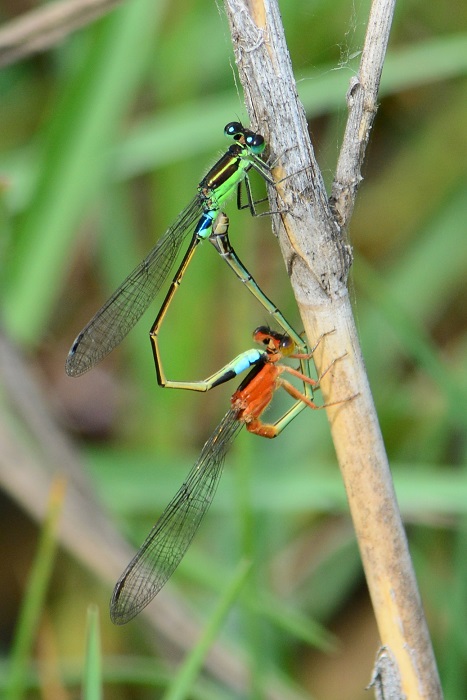
Hluhluwe district, KwaZulu-Natal
Photo by Ryan Tippett

